With Greenwich Peninsula undergoing large scale regeneration, in which the post industrial wilderness is transforming into a metropolitan centre in line with Canary Wharf and Nine Elms, focus on how public realm connects and services the emerging population is paramount, especially given the lack of large scale public parks in the proposed masterplan.
Architects: Alexander Saunders
University: University Of Sheffield

My final MLA project centred on the most northern tip of Greenwich Peninsula and looked to re-imagine the Thames River Path as a river park landscape that addresses the impact of existing built form and that shifts the dominance of outward views to Canary Wharf towards inward facing experiences.
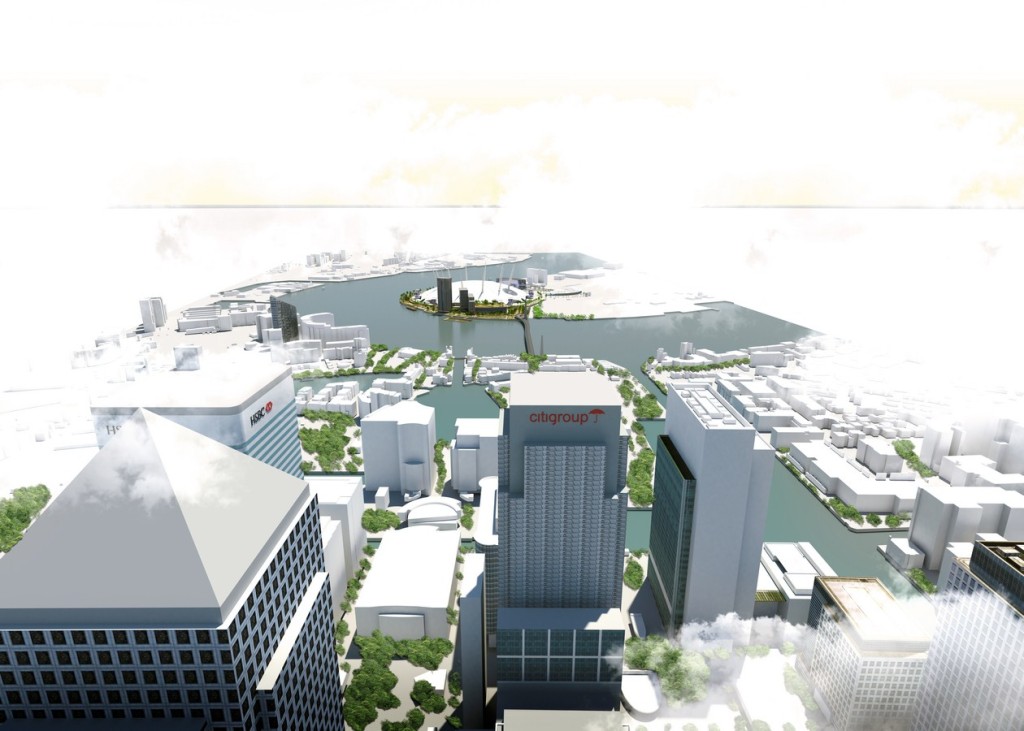
The parks design is a linear journey that wraps around the northern edge of the O2 Arena and is comprised of a sequence of parklets. These parklets have been predominantly design in Virtual Reality in which spaces were tested by students, residents and commuters and tailored according to their personal experiences at a particular location on site.
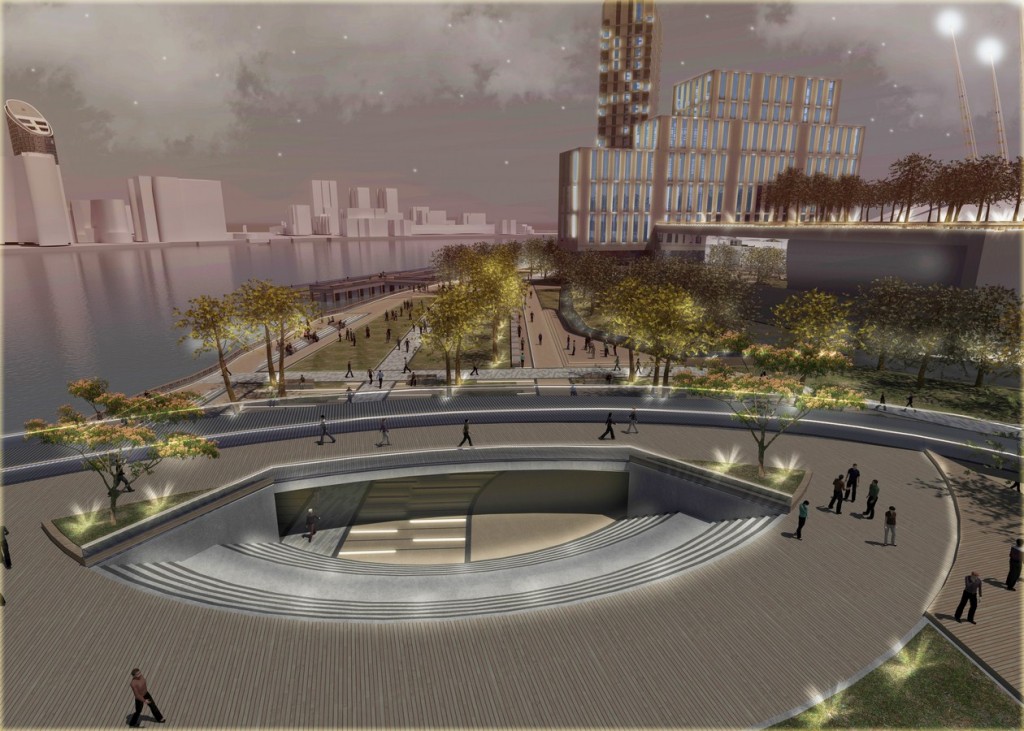
This method of working resulted in a park with a great deal of contrast and variety that ensured those who ‘visited’ the park in virtual reality were given the opportunity to have impactful experiences. This was achieved through manipulating hard and soft landscape forms, various height relationships between the public and their surroundings and exploring how we can provide small scale experiences while accommodating large scale crowding.
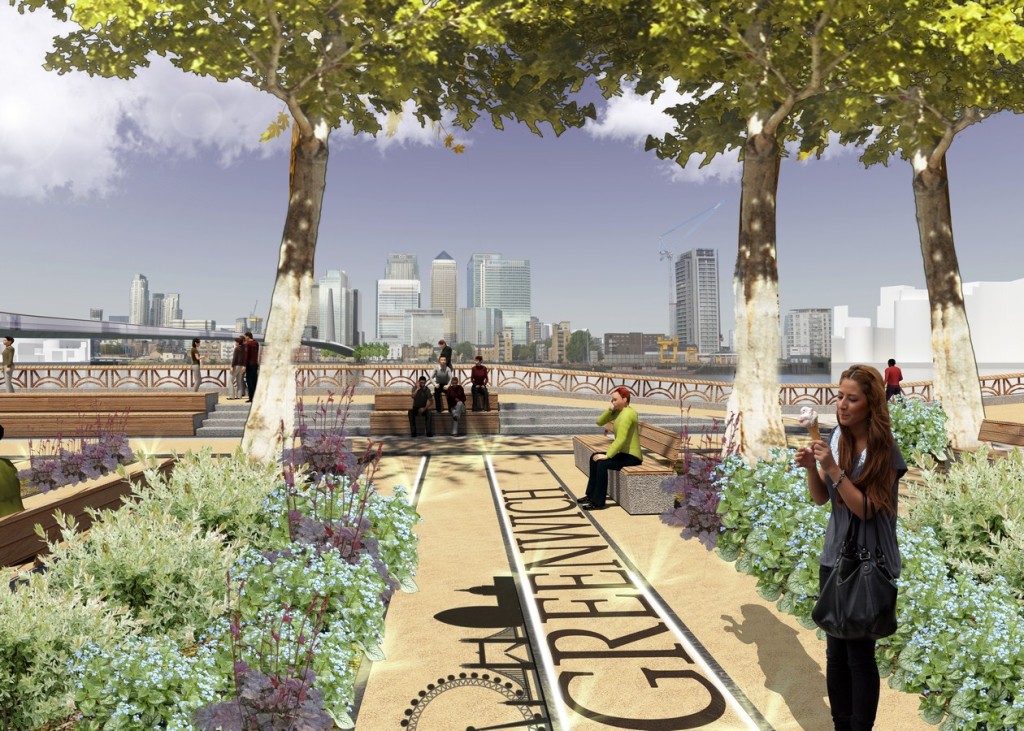
Being able to design spaces that could accommodate large volumes of visitors to the arena, new residents and those exploiting the new commuter route across the proposed pedestrian cycle bridge to Canary Wharf, all the while offering each visitor localised niche escapes drove decisions from the macro scale journey to the micro scale seating. Without these smaller interactions that were experienced by the users of virtual reality, the size of the built form would continue to dominate.
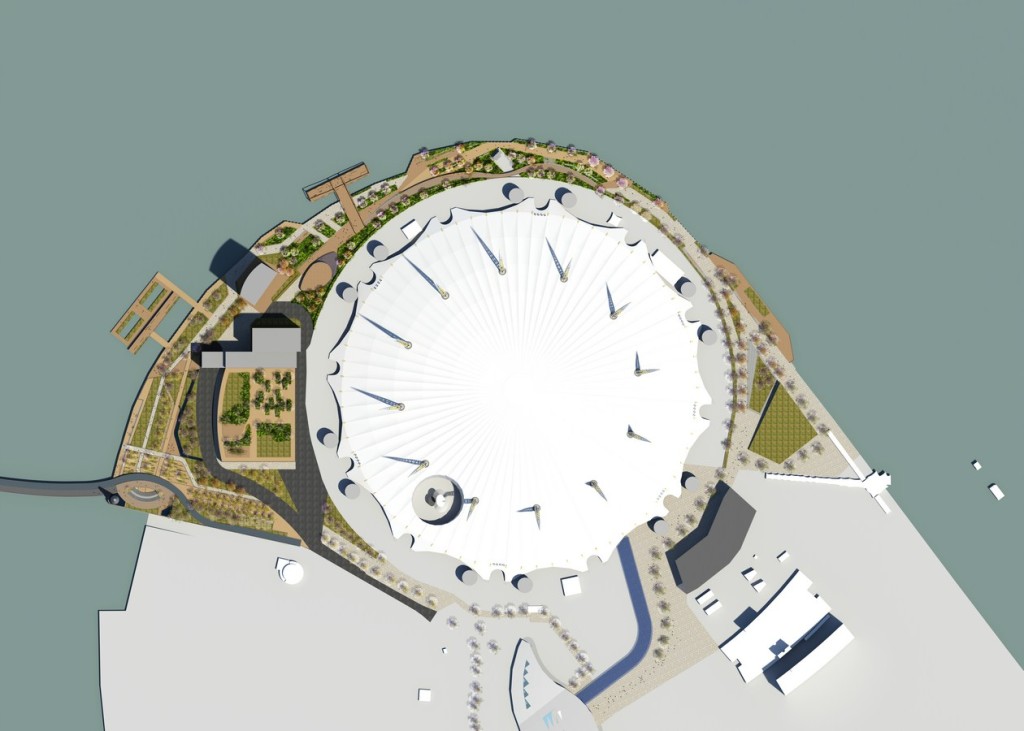
As the design developed from sketch, through virtual reality and onto the final proposal, the intensity of spaces along the route was driving both spatial layout and materiality.
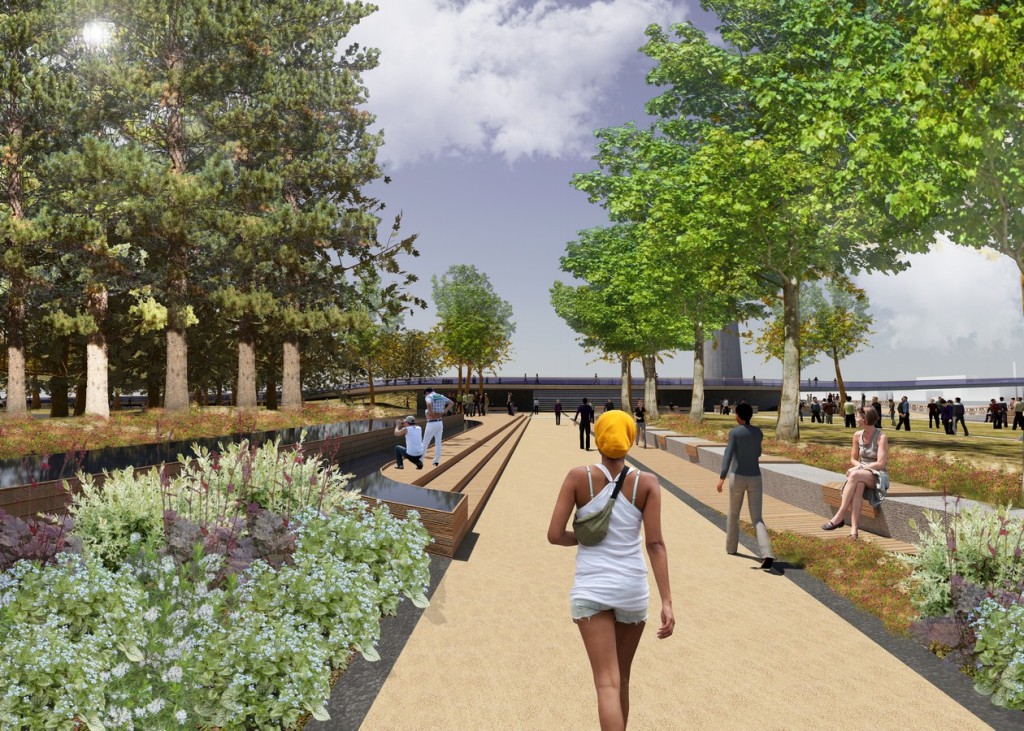
It is human nature to favour places and opportunities that have greater options, variety and diversity. To suit this and design a park that was dynamic and promoted human movement the character of the park peaks and troughs between formal landings at the eastern and western extremities and an urban wilderness along the northern edge.
The north consists of a large and leisurely wooded walk, exploiting timber and organic sweeping movement particularly through the skyway that rises towards the canopies, briefly escaping the main walkway.
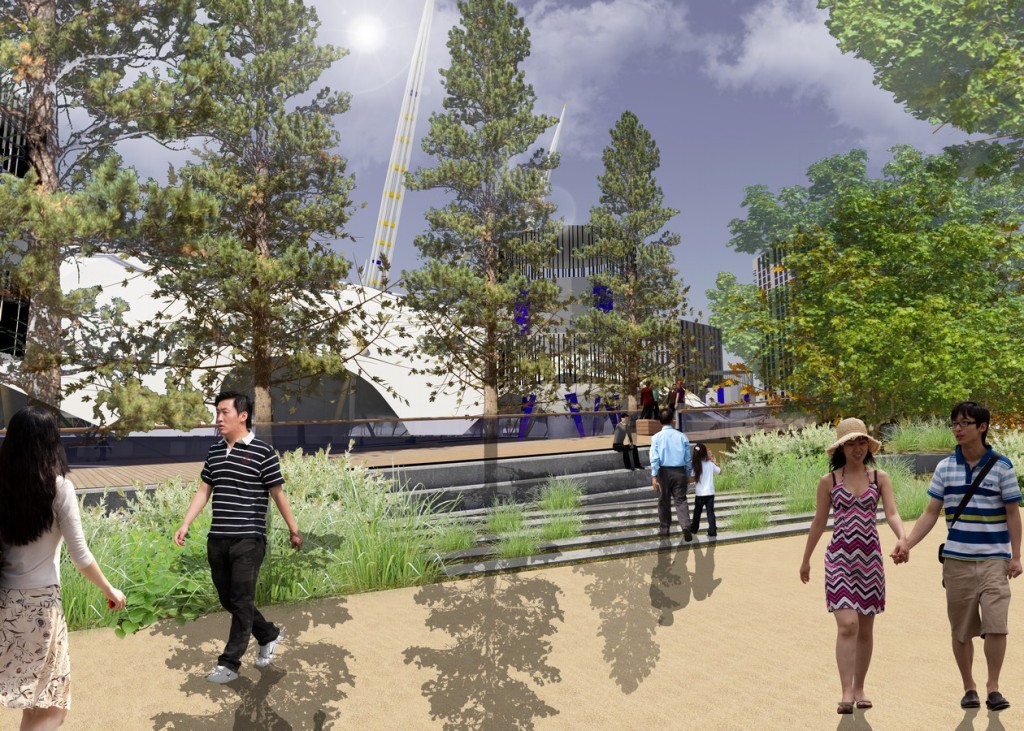
The western edge consists of the wandering garden which is a formal statement garden at the base of the proposed bridge’s grand staircase. This then leads to a series of pleasure lawns, water features and tapering river-front platforms and seats.
The eastern edge is a thin terraced landscape that transitions the return from the northern wilderness, back into the existing public realm at the O2 Arena entrance.

While spatial layout was dictated by human movement the key to maximising the diversity of experiences centred on exploring the temporal qualities of the landscape through soft landscape detailing that worked with hard landscape features. For example;
The planting selection at the bridge landing exploited varieties of Tulips, Alliums and grasses for both very different structures as well as a range of flowering periods to ensure new visual experiences upon arrival. These beds then lay in formal linear strips defined by steel edging reflective of the steel of the post industrial gas works.
In contrast the inner edges of the park have a more woodland aesthetic and character. Pine and Spruce trees shape evergreen avenues driving views along the park while the under-story utilises wetter grass species to manage low levels of grey water and swathes of asters run colour along more organic sight lines through the woodland. This wilderness edging eventually takes over to dominate the character of the northern boundary of the park through which the skyway pierces.
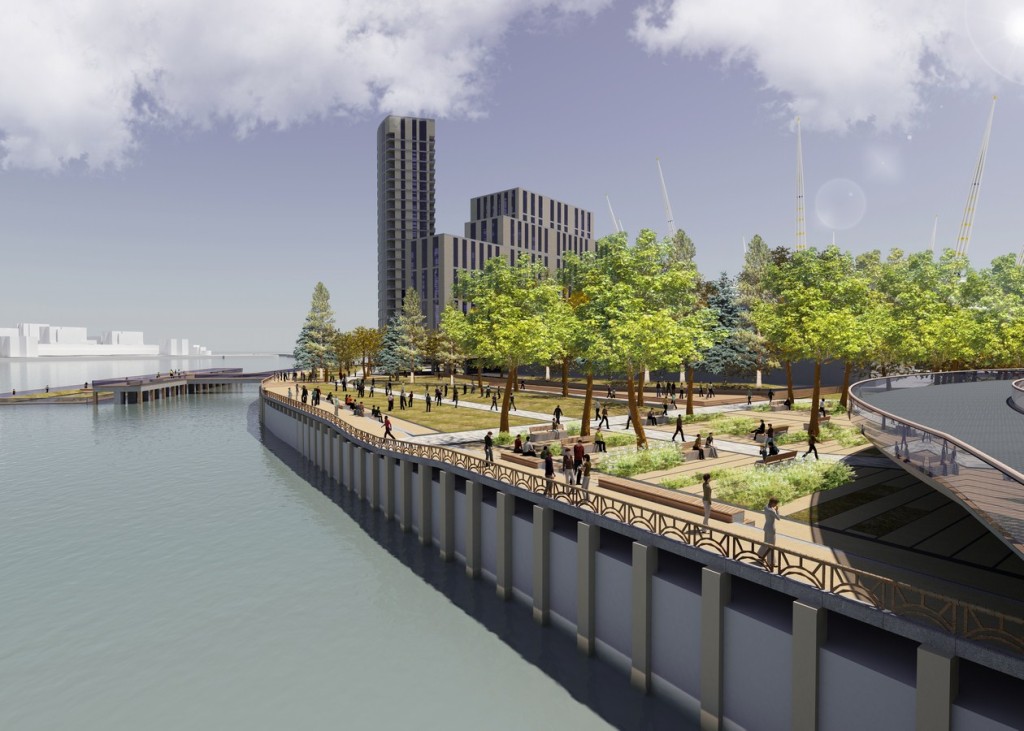
Virtual Reality Design
Virtual reality is the computer-generated simulation of a three-dimensional image or environment that can be interacted with in a seemingly real or physical way by a person using special electronic equipment, such as a helmet with a screen inside,
From ‘Oxford University Press’, 2016

“Landscape architecture is rooted in an understanding of how the environment works and what makes each place unique. It is a blend of science and art, vision and thought.
It is a creative profession skilled in strategic planning, delivery and management. Landscape architects bring knowledge of natural sciences, environmental law and planning policy. They lead teams, engage stakeholders and manage conflicting demands. And they create delight with beautiful designs, protecting and enhancing our most cherished landscapes and townscapes”.
From ‘Landscape architecture: a guide for clients’, 2012

These two definitions have much in common particularly human interaction with the physical environment especially through science and vision. Therefore I chose to pursue a design work-flow throughout the Greenwich River Park design process in which proposals and ideas were tested in Virtual Reality so that my personal creative solutions could be adapted to accommodate the experiences and desires of people who will one day use the site.
By gaining primary source information from people walking through the proposed landscape it was possible to create experiences in sequences that maximised the engagement between user and place at a variety of scales.

Alexander Saunders
I am a Landscape Architect with a masters in Landscape Architecture from the University Of Sheffield. My experience centres on public realm design, particularly in London on projects including Battersea Power Station (Phases 1-3) as well as North West Cambridge and international experience on Neopolis, Moscow. This experience was gained during an exceptional 13 months at LDA Design working with fantastic landscape architects as well as clients and co-consultants including Carillion, Buro Happold Engineering, Simpson Haugh Architects, Gehrys, Fosters + Partners and DRMM Architects.
During this time I developed knowledge and skill in technical design and project management working under David Thompson on Battersea Phase 1 as well as gaining great additional design development skills under Benjamin Walker and the rest of LDA Design and our co-consultants.
This experience, combined with my existing design skill and a drive to pursue new technologies in landscape architecture, has allowed me to develop into a well rounded and forward thinking landscape architect.
With a keen interest in the latest sustainability research regarding public realm and my knowledge in emerging technologies including virtual reality (of which I introduced the design capabilities and work-flows to LDA Design and the University of Sheffield), augmented reality and the world of mobile sharing, I have the potential to offer a great deal to the profession, my clients and practises that share these interests.





